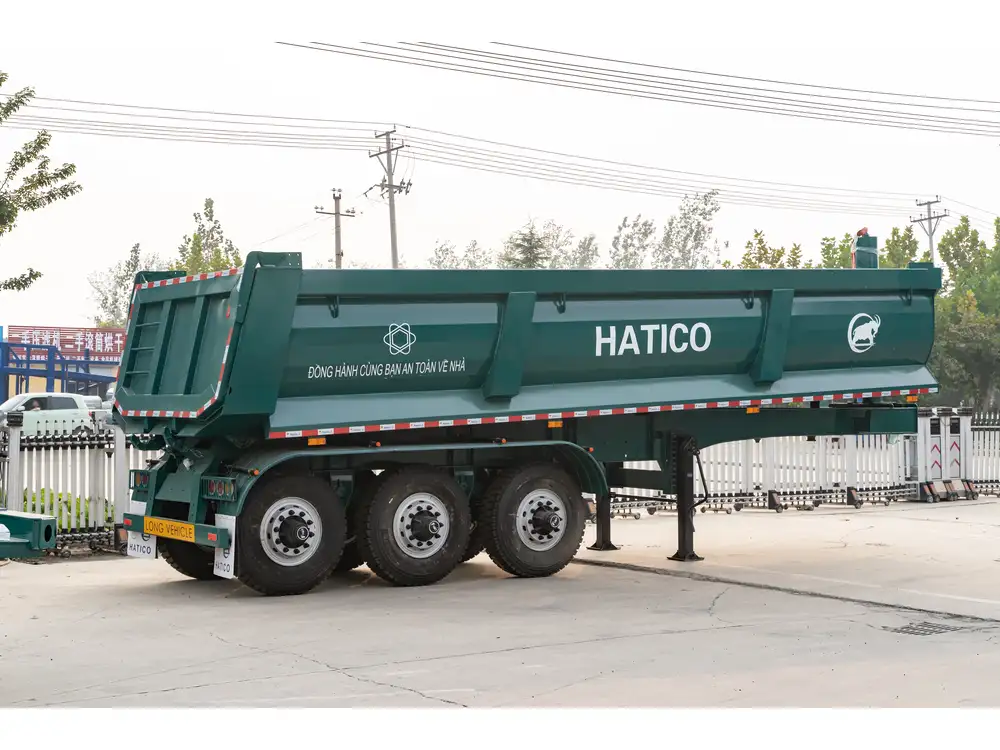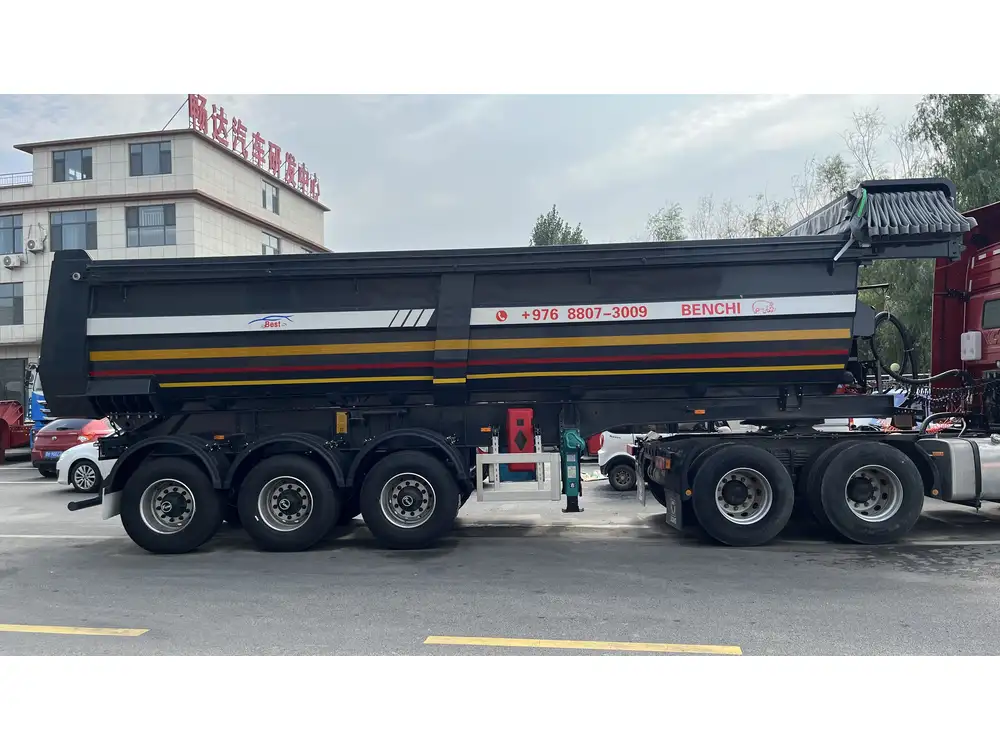In the world of logistics and transportation, understanding the intricacies of handling shipping containers is paramount. As a semi-trailer manufacturer, we recognize the importance of efficiently unloading containers from trailers while ensuring safety and operational efficiency. This in-depth guide provides actionable insights on how to successfully remove a shipping container from a trailer, analyzing various methods, tools, and safety protocols.
Understanding Shipping Containers and Trailers
Shipping containers, primarily used for transporting goods, come in various sizes—most commonly 20 and 40-foot containers. These robust steel boxes are designed to withstand harsh conditions during transit. Trailers, on the other hand, come in different configurations, such as flatbeds, curtain sides, and box trailers, each suited for particular transport needs.
Key Components of a Trailer-Container Setup
| Component | Description |
|---|---|
| Shipping Container | Standardized container used for load transport, available in various sizes. |
| Trailer Type | Determines the method of unloading (flatbed, box, tilt). |
| Load Locks | Secures the container to the trailer. |
| Unloading Equipment | Tools used for the safe removal, like forklifts or cranes. |

Preparing for the Unloading Process
Successful unloading begins with thorough preparation. The following steps outline the necessary precautions and checks before attempting to remove a shipping container.
1. Assess the Trailer and Container Setup
Take a close look at how the container is secured to the trailer. Identify the type of locking mechanisms used, whether it be twist locks or other securing methods. Check if the container has any signs of wear or damage.
Important Considerations:
- Load Distribution: Ensure the weight of the container is evenly distributed on the trailer.
- Container Condition: Inspect for any potential hazards, such as leaks or damages, which could pose safety risks.

2. Choose the Right Equipment
Selecting the right tools for the job is crucial. Depending on the container size and weight, various equipment can be utilized:
- Forklift: Ideal for shorter containers (up to 20 feet). Ensure the forklift has the capability to lift the weight.
- Mobile Crane: Best for heavy-duty tasks without the need for a ground-level platform.
- Roller Decks: A set of rollers that can help move a container from a stationary trailer.
Equipment Comparison:
| Equipment Type | Ideal Use Case | Advantages |
|---|---|---|
| Forklift | Unloading short containers | Cost-effective |
| Mobile Crane | Heavy containers or remote areas | Versatile and powerful |
| Roller Decks | Gradual unloading | Reduces strain on the container |
Executing the Unloading Process
After completing preparation and choosing the right equipment, it’s time to execute the unloading process. This section breaks down the methodical steps to remove a shipping container from a trailer.

1. Secure the Area
Before beginning, ensure that the surrounding area is clear of personnel and obstacles. This minimizes the risk of accidents. Use cones, warning signs, or barriers to keep unauthorized individuals clear of the unloading site.
2. Release Locking Mechanisms
After ensuring safety, proceed to release the locking mechanisms securing the container. Follow these steps carefully:
Steps to Release Locks:
- Observe Instructions: Familiarize yourself with the manufacturer’s instructions.
- Use Appropriate Tools: Having the right tools at hand, like a suitable wrench for twist locks, expedites this process.
- Inspect for Safety: Before lifting, ensure locks do not pose any potential hazards.

3. Position the Unloading Equipment
Carefully position the unloading equipment, ensuring it is stable and on firm ground. Follow these guidelines:
- Forklift Placement: Align the forks so that they can successfully engage with the container’s bottom corner castings.
- Mobile Crane Setup: Position the crane to avoid overreaching; it should maintain a low center of gravity.
4. Lifting the Container
With everything prepared, it’s time to lift the container. Follow these steps to ensure safety:
- Hook Up the Equipment: If using a crane, securely attach the slings or hooks to the container.
- Check Again: Before lifting, double-check that everyone is at a safe distance.
- Gradual Lift: Lift the container slowly and steadily without sudden movements.
5. Guiding the Container Down
Once airborne, guide the container away from the trailer’s edge, maintaining an even height until it reaches the unloading area.
- Watch for Obstacles: Always be aware of the perimeter during the lift.
- Team Coordination: Maintain communication between operators to ensure a synchronized operation.

6. Lowering the Container Safely
When positioning the container, lower it gently onto a predetermined ground area.
Key Points for Lowering:
- Use Spotters: Have a person on the ground to assist in positioning if needed.
- Gentle Touchdown: Avoid slamming the container to the ground; ensure it settles evenly.
7. Secure the Container in Place
After lowering the shipping container, secure it in the desired position. Depending on the intended use, this may involve locking it down again or simply leaving it in place for the time being.

Troubleshooting Common Unloading Issues
While unloading operations may seem straightforward, various challenges may arise. Here we break down some common issues and their solutions.
1. Locked Containers
If a container is inadvertently locked or jammed, it’s essential to remain calm:
- Identify Mechanism Type: Understand how the lock functions.
- Use Lubricant: Apply a penetrating oil to loosen any rusted or jammed parts.
2. Uneven Weight Distribution
If the container appears to be tipped or heavy on one side:
- Reassess Equipment Placement: Adjust the position of the equipment used for unloading.
- Consider Internal Load Distribution: Evaluate the possibility of unloading partial loads if accessible.

3. Windy Conditions
High winds during the lifting operation can pose significant safety hazards:
- Delay Unloading: If wind speeds exceed safe limits, postpone the task.
- Weight Addition: Consider adding weights inside the container if permissible to stabilize.
Safety Protocols to Follow
Safety is paramount when unloading shipping containers. Implement these protocols to maximize safety during the unloading process.
1. Personal Protective Equipment (PPE)
Ensure everyone involved is wearing appropriate PPE, which may include:
- Hard hats
- Steel-toed boots
- Safety gloves
- Reflective vests

2. Conduct Pre-Operation Briefings
Before commencing work, hold a safety briefing to discuss:
- Roles and responsibilities
- The unloading plan
- Emergency procedures
3. Regular Equipment Checks
Route checks help ensure all equipment is functioning correctly:
- Inspect forklifts and cranes regularly.
- Ensure all safety mechanisms are operational.
Conclusion: Mastering Container Unloading
Successfully unloading a shipping container from a trailer is a combination of proper planning, awareness, and execution of best practices. By adhering to established procedures, assessing your environment and equipment, and following strict safety protocols, you can ensure a seamless unloading operation that upholds efficiency and mitigates risks.
Should questions or uncertainties arise during the unloading process, consult with experienced personnel and refer to manufacturer guidelines to prevent accidents. By embracing these methodologies, we can ensure operational safety and reliability in the transportation sector, empowering businesses to thrive with confidence.

Additional Resources
To enhance your understanding and refine your skills, consider exploring further resources related to shipping container management and unloading methodologies. These can include:
- Industry webinars on container logistics
- Workshops focusing on heavy equipment operation
- Safety protocol training sessions
By staying informed and educated, we not only elevate our knowledge base but also contribute to a culture of safety and efficiency in logistics.



